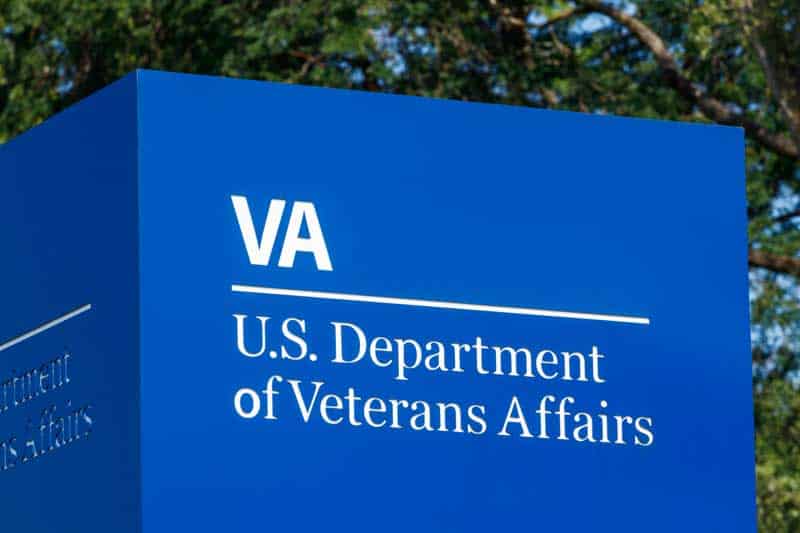Am I Eligible For Veteran’s Medical Benefits?
For veterans who have served in any branch of the United States military, there are many benefits readily available through the Department of Veterans Affairs (VA). One of the most important, and arguably the most helpful, benefits offered through the VA is access to affordable and reliable healthcare.
Veterans returning to civilian life oftentimes require routine medical checkups for a variety of conditions and illnesses. These services, without the proper assistance, can quickly become an insurmountable financial burden. Eligible veterans can receive a wide range of medical benefits such as preventive testing and care, primary and specialty care, diagnosis for existing issues, and inpatient and outpatient care in state-of-the-art facilities. In some cases, veterans can receive more extensive medical benefits such as dental services to ensure their well-being.

Eligibility Requirments
Veterans who are interested in receiving healthcare benefits through the VA must first meet their standard of eligibility requirements. It is important to note, however, health benefits are issued to veterans based on which Priority Group they fall into. The most basic requirement that all veterans must meet to be eligible for health benefits is that the person of interest must have served on active duty and ended their military career with a discharge rating of anything other than dishonorable. Receiving a dishonorable discharge can prevent veterans from receiving many of the benefits offered by the VA.
Who Is Eligible?
These benefits are available to all branches of the U.S. military including the Air Force, Navy, Marines, National Guard, and Army Reserves. Members of the National Guard or Reserves may be eligible for VA health benefits depending upon whether or not they were called to active duty per Federal order and served for the entire length of time-ordered. Combat Veterans who served in their respective branch of the military after November 11, 1998 are also entitled to health benefits as long as they enroll no later than 5 years after discharge. Nursing home care and free health services are available for Combat Veterans who can prove their conditions are the result of their time served.
Specific Requirements For Eligibility
While the federal law regarding the time period after discharge and when veterans can apply for health benefits is limited to a 5 year period, there are a few exceptions to this rule. Typically, veterans must apply for health benefits within 5 years after discharge in order to prove without question that their conditions were caused by their service. Veterans who were discharged between January 1, 2009 and January 1, 2011 but failed to enroll in the allotted 5 year time period are entitled to an additional one year of eligibility thanks to the Clay Hunt SAV Act which was passed on Febuary 12, 2015.
Veterans who served at Camp Lejeune for at least 30 days between August 1, 1953 and December 31, 1987 are also eligible to receive health benefits despite their enrollment status or time of enrollment. This is due to the possibility that veterans suffered from illness or injury due to contaminated drinking water. Unfortunately, a large amount of the drinking water from Camp Lejeune was contaminated with toxic industrial chemicals which have caused a plethora of health issues for many veterans.
Additionally, veterans who served in the military after September 7, 1980 or entered active duty after October 16, 1971 are required to have served 24 continuous months unless they were discharged due to a disability or unforeseen hardship commonly referred to as an “early-out”. Otherwise, a discharge rating of anything other than dishonorable will suffice.
Priority Groups
During the application process for health benefits through the VA, the VA will first determine which of the eight Priority Groups the veteran belongs in. This Priority Group determination will outline the services available to the veteran in question and is intended to provide veterans with the exact services that best suit their needs. Priority Group determination takes many factors into consideration including military service history, disability rating, income level, eligibility for Medicaid, and other benefits that the veteran is receiving through the VA.
Priority Group 1
The VA assigns veterans to Priority Group 1 if they are living with a service-related disability that is deemed 50% or more disabling to the veteran. Veterans with a service-connected disability that makes it difficult or impossible to work are also typically allocated to this Priority Group. Veterans that have received the Medal of Honor for their service are also assigned to Priority Group 1.
Priority Group 2
Veterans who have a service-connected disability deemed no more than 30% or 40% disabling are typically assigned to Priority Group 2.
Priority Group 3
Priority Group 3 is typically assigned to veterans who either spent time as a Prisoner of War, received a Purple Heart, discharged for a service-related disability, or have been awarded special eligibility classification under Title 38, U.S.C § 1151.
Priority Group 4
Priority Group 4 is reserved for veterans who are currently receiving VA aid or have received a determination of being catastrophically disabled issued by the U.S. Department of Veterans Affairs.
Priority Group 5
This group is assigned to veterans who do not have a service-related disability who are earning an income lower than the VA adjusted income limits. Veterans who are receiving pension benefits through the VA or are eligible for Medicaid are also allotted to Priority Group 5.
Priority Group 6
Priority Group 6 is reserved who veterans who served in very specific situations that have later been deemed hazardous. This group is also assigned to veterans who are newly enrolled in VA health care and were discharged less than 5 years ago. For a full list of Priority Group requirements, be sure to visit the U.S. Department of Veterans Affairs website.
Priority Group 7
Veterans who earn an annual income below the geographically adjusted income limits for their specific region of the United States are assigned to Priority Group. Unlike lower number Priority Groups, veterans in Priority Group 7 must agree to pay copays for their services.
Priority Group 8
Priority Group 8 is reserved for veterans who earn an income higher than the geographically adjusted income limits as long as the veteran agrees to pay the copays.
The VA Is Here To Help
While it may seem a bit confusing to understand a veteran’s eligibility requirements for health benefits through the VA, at the end of the day the VA focuses all its time and energy to help veterans live a comfortable lifestyle. For more in-depth information regarding eligibility and the application process, be sure to visit the U.S. Department of Veterans Affairs website. Along with health benefits, the VA offers home loan assistance, pension plans, and many more beneficial programs.
Save Money on Your Wireless Phone Service
If you qualify for SNAP benefits, you also qualify for Lifeline service. Lifeline is a federal benefit program that makes it possible for low-income consumers to receive access to free or heavily discounted communication services. Click here to find out more and apply for this valuable benefit.



